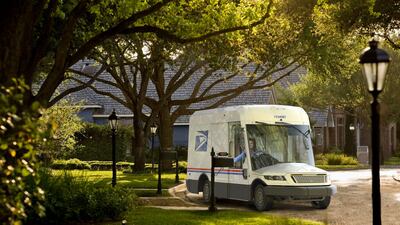For the first time in almost 30 years, millions of Americans will be seeing a change in how their mail is delivered.
The United States Postal Service, which delivers mail to more than 160 million residences across the US, unveiled a new design for their fleet of mail vehicles.
The boxy design of the older fleet of vehicles that many have come to associate with the postal service in the US will soon fall by the wayside, to be replaced by what the postal service is calling the Next Generation Delivery Vehicle, or NGDV.

The NGDV is definitely sleeker and more aerodynamic, but not everyone seems to be on board with the new look.
Thousands responded on Twitter and Facebook shortly after USPS posted a photo of the new design.
The US Postal Service, however, did make it a point to do more than just show the look of the new vehicle. USPS emphasised the many improvements under the hood.
“The NGDV vehicles will include air-conditioning and heating, improved ergonomics, and some of the most advanced vehicle technology — including 360-degree cameras, advanced braking and traction control, air bags, a front- and rear-collision avoidance system that includes visual, audio warning, and automatic braking,” read a news release from USPS. “The vehicles will also have increased cargo capacity to maximise efficiency and better accommodate higher package volumes stemming from the growth of eCommerce.”
Although the addition of air-conditioning might seem banal, most of the current vehicles used by USPS don't have the feature, creating a major burden for mail carriers during warmer summer months, so the air-conditioned vehicles are a major victory for many postal workers.
The addition of air-conditioning was also appreciated by many on social media, blunting some of the negativity.
"It’s ridiculous that our mail carriers have to deliver mail and packages in vehicles that are more than 30 years old and are always breaking down and don’t have air conditioning," wrote one Facebook user on the USPS Facebook page.
"They deserve these basic amenities," wrote another.
The new design was part of a 10-year, billion-dollar vehicle modernisation contract awarded to Oshkosh Defense, a company based in Oshkosh, Wisconsin.
US Postal Service says the NGDVs will have another advantage over their predecessors in that they will be significantly better for the environment.
"The vehicles will be equipped with either fuel-efficient internal combustion engines or battery electric powertrains and can be retrofitted to keep pace with advances in electric vehicle technologies," read the news release from USPS.
Even this, however, caught the attention of some who felt the contract for the vehicles should have been awarded to a company with more of an environmentally friendly approach completely void of internal combustion engines.
Nonetheless, postmaster general and US Postal Service Officer chief executive Louis DeJoy said the planned vehicles are a much-needed step forward.
“Our fleet modernisation also reflects the Postal Service’s commitment to a more environmentally sustainable mix of vehicles,” DeJoy said. “Because we operate one of the largest civilian government fleets in the world, we are committed to pursuing near-term and long-term opportunities to reduce our impact on the environment.”
The new vehicles are expected to appear on mail routes in 2023.


